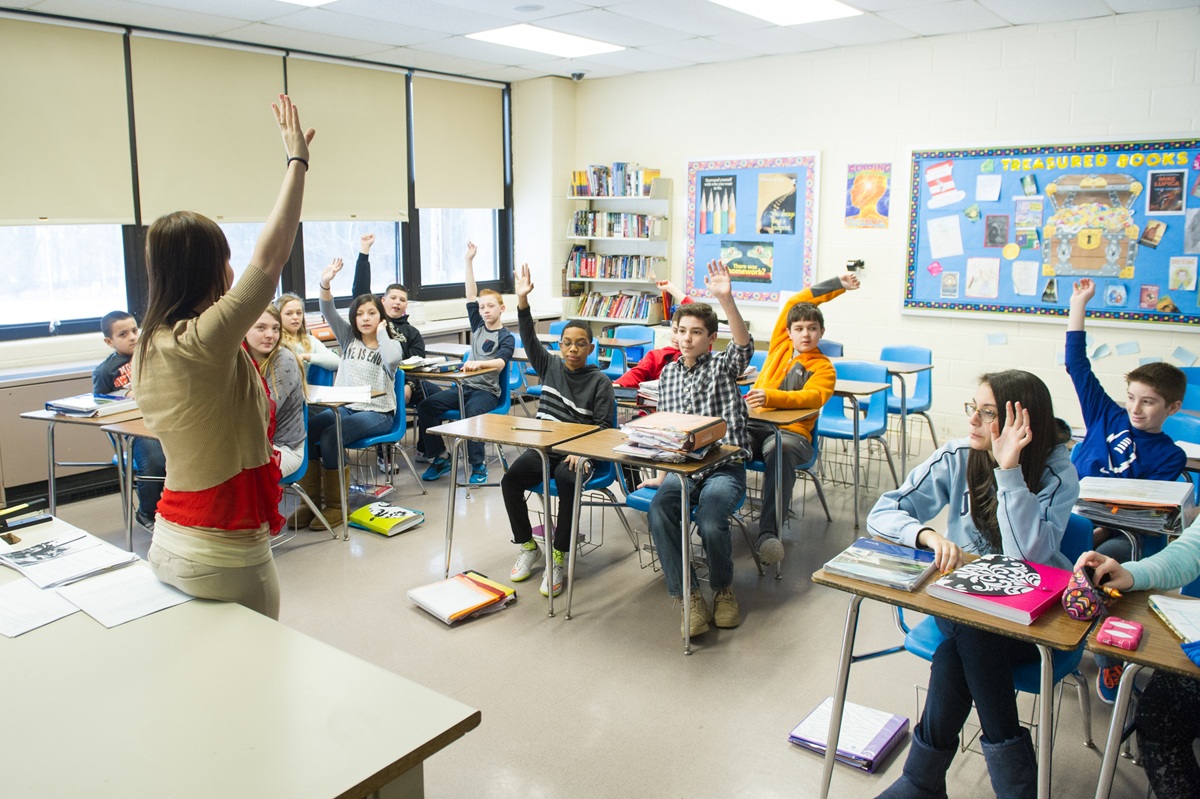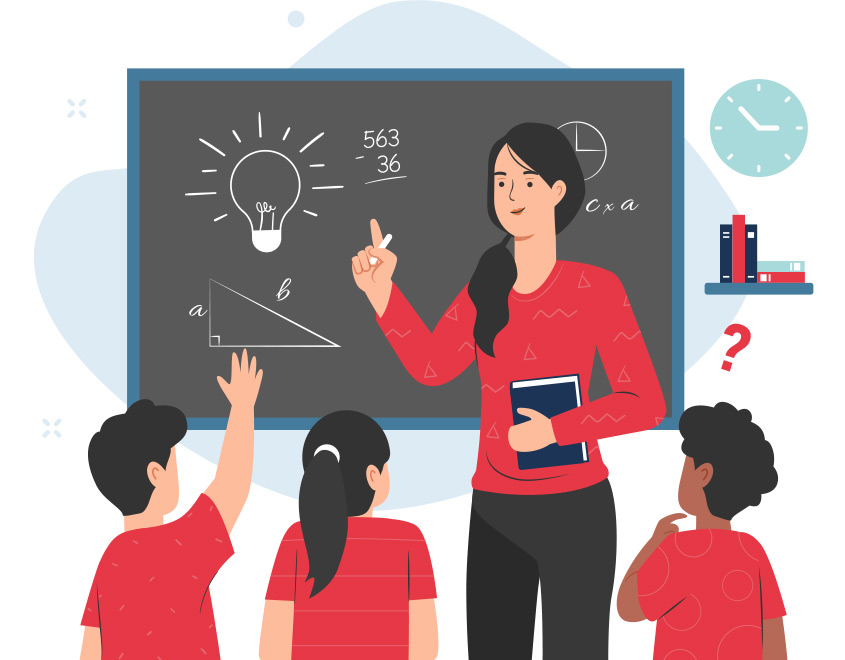A Comprehensive Guide to the Various Knowing Techniques in Main Scientific Research Guideline
The exploration of diverse learning approaches in main science guideline offers a possibility for teachers to enhance trainee engagement and understanding substantially. By taking a look at hands-on knowing strategies, inquiry-based methods, and collaborative methods, we can identify reliable methods that satisfy numerous learning designs. In addition, the combination of modern technology and separated instruction plays a critical function in cultivating an inclusive atmosphere. The question stays: just how can these techniques be successfully implemented in the classroom to optimize their influence? The solution hinges on a closer examination of each method and its effects for training scientific research.

Hands-On Knowing Methods
Hands-on discovering strategies play a pivotal role in main science direction, engaging trainees in active exploration and testing. These techniques enable students to engage straight with products and sensations, cultivating a much deeper understanding of clinical principles. By making use of manipulatives, versions, and real-life experiments, instructors produce an atmosphere where students can observe, hypothesize, and test their concepts.
Such methods not only enhance understanding yet likewise cultivate crucial thinking and analytic abilities. When trainees join tasks like constructing basic makers, planting seeds, or conducting chemical responses, they are motivated to ask concerns and seek answers via their own observations. This experiential strategy assists to demystify complex clinical principles, making them more available and relatable.
Additionally, hands-on learning advertises partnership among peers, as pupils usually function in groups to perform experiments or share searchings for. This teamwork not just enriches their understanding experience but additionally develops crucial social skills. Inevitably, integrating hands-on techniques in key science direction cultivates a lifelong love of understanding and interest concerning the natural world, laying a solid foundation for future scholastic pursuits in scientific research and beyond.
Inquiry-Based Discovering
Inquiry-based understanding is a training strategy that motivates students to ask concerns, investigate phenomena, and create their own understanding of scientific principles. This approach shifts the focus from conventional teacher-led guideline to an extra student-centered experience, where learners take the initiative in their academic journey. By promoting inquisitiveness, inquiry-based understanding promotes deeper engagement with the material, allowing trainees to check out topics in a significant context.
In method, this strategy often involves hands-on experiments, observations, and crucial thinking activities that align carefully with the scientific technique. Trainees are motivated to develop hypotheses, style investigations, and evaluate data, which cultivates necessary abilities such as logical and analytic reasoning. The function of the teacher in this structure is to promote expedition, leading pupils via the questions procedure while urging independent idea and cooperation.
Moreover, inquiry-based learning nurtures a feeling of possession over the learning procedure, motivating trainees to seek understanding actively. This method not just improves understanding of scientific concepts but additionally cultivates a lifelong love for learning, equipping pupils with the abilities required to browse an increasingly complex globe.
Collaborative Understanding Approaches
Collaborative understanding techniques empower students to take part in meaningful interactions with peers, cultivating a common responsibility for their academic end results. In primary science guideline, these strategies motivate learners to interact to check out scientific concepts, resolve troubles, and conduct experiments (primary science tuition Singapore). By joining team tasks, trainees can take advantage of varied perspectives, permitting richer understanding and retention of clinical knowledge
One key discover this aspect of joint learning is the emphasis on communication skills. Trainees have to express their thoughts, listen proactively to others, and discuss concepts, all of which are important expertises in both real-world and scholastic contexts. This social communication not just boosts their understanding of clinical concepts however also promotes team effort and dispute resolution skills.
When trainees see the worth of their contributions within a team, they are extra likely to take possession of their understanding journey. Generally, including joint knowing techniques in key science direction grows a vibrant learning atmosphere that prepares trainees for future scholastic and social obstacles.
Technology Combination in Scientific Research
The assimilation of modern technology in primary science direction improves finding out experiences by giving innovative tools and resources that sustain various training methodologies, including collaborative knowing - primary science tuition Singapore. Using electronic systems, simulations, and interactive applications enables pupils to involve deeply with clinical ideas, promoting an extra hands-on strategy to understanding
Digital research laboratories, for example, make it possible for students to carry out experiments safely and effectively, promoting inquiry-based learning. These tools can simulate real-world clinical circumstances, enabling trainees to imagine complex procedures that would certainly be tough to duplicate in a conventional classroom setting. Modern technology promotes communication and cooperation among students, as they can share searchings for and function together on tasks with online systems.
Furthermore, multimedia presentations and instructional video clips can enrich lessons by dealing with diverse understanding styles, making abstract concepts a lot more easily accessible. Data evaluation tools also equip students to accumulate and translate clinical information, reinforcing crucial assuming abilities. Generally, the tactical consolidation of technology in main scientific research instruction not just improves involvement however additionally prepares students for a technically innovative society, furnishing them with essential skills for future clinical undertakings.
Distinguished Direction Approaches
Distinguished direction approaches are important for attending to the varied demands of learners in primary science education. These methods make it possible for educators to tailor their teaching techniques to fit differing capacities, passions, and finding out designs within the class. By using differentiated instruction, have a peek here teachers can create an inclusive environment that promotes interaction and improves understanding of scientific ideas.
One efficient method is to utilize versatile grouping, which enables trainees to work together with peers at similar skill degrees or with varying viewpoints. This strategy motivates peer discovering and promotes crucial thinking. Additionally, offering selections in tasks can encourage trainees, allowing them to select tasks that my latest blog post resonate with their interests while still fulfilling curricular purposes.
Additionally, integrating tiered assignments is an additional useful technique. Deliberately jobs with differing levels of complexity, instructors can guarantee that all pupils are suitably challenged, no matter of their efficiency. Utilizing developmental evaluations to gauge recognizing additional enables educators to adjust their educational techniques dynamically, guaranteeing that each student gets the assistance they need.
Inevitably, carrying out separated instruction approaches in primary scientific research education not only boosts trainee understanding outcomes however additionally cultivates an interest for science, preparing trainees for future scholastic pursuits.

Verdict
In recap, effective main scientific research direction demands a diverse strategy that includes hands-on understanding, inquiry-based techniques, and joint techniques. The assimilation of technology and separated guideline even more provides to varied knowing designs, cultivating an environment for expedition and crucial thinking. By applying these techniques, teachers can boost student interaction and comprehension, eventually supporting a long-lasting interest for science and inquiry. Such extensive methods are crucial for developing informed and curious future scientists.
The exploration of diverse learning approaches in key scientific research direction presents an opportunity for instructors to improve trainee engagement and understanding dramatically.Hands-on discovering methods play a pivotal duty in main science guideline, involving students in energetic exploration and experimentation.Inquiry-based understanding is a training method that urges trainees to ask questions, explore phenomena, and construct their very own understanding of scientific principles.Collective understanding techniques empower pupils to engage in significant interactions with peers, promoting a shared obligation for their educational results. Overall, integrating joint knowing strategies in primary scientific research instruction cultivates a vibrant learning atmosphere that prepares pupils for future academic and social difficulties.